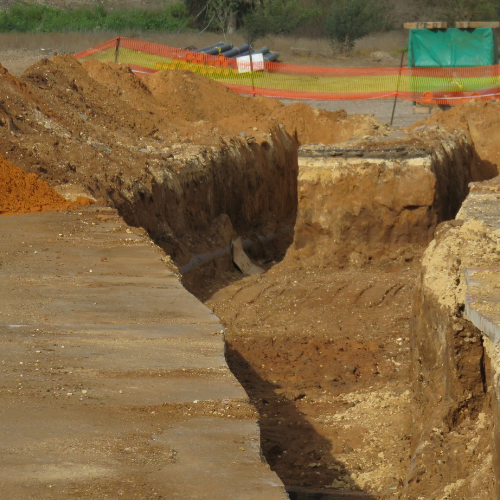
Everything You Need to Know About Trenching in AU
Share
Trenching is one of the most essential yet complex tasks in earthmoving and construction. Whether it’s laying underground utilities, installing drainage systems, or preparing solid foundations, a properly excavated trench ensures safety, efficiency, and long-term durability for any project.
At In2it Earthmoving & Construction, we’ve built a reputation for delivering safe and reliable trenching solutions across Brisbane, Logan, Redland, Scenic Rim, and the Gold Coast. Backed by a skilled team and modern equipment, we handle everything from residential utility trenches to large-scale civil works, making sure every excavation is completed to the highest standards.

What Is Trenching?
Trenching is the process of digging narrow, elongated excavations in the ground, typically deeper than they are wide. They are used to install or maintain underground utilities (pipes, cables, drains), drainage systems, foundations, footings, retaining walls, and for any infrastructure that must run below ground.
Trenches can vary widely in depth, width, slope, and type of soil. These factors, along with site access, safety requirements, and weather conditions, influence how trenching should be planned and executed.
Why Trenching Is Crucial in Construction & Earthmoving
-
Infrastructure & Utilities
Much of modern development — water, sewer, electrical, gas — requires buried utilities. Proper trenching ensures these can be laid safely, correctly, and with adequate protection against damage or shifting soil. -
Drainage & Stormwater Management
In wet climates or areas prone to heavy rainfall (like parts of Brisbane & the Gold Coast), correct drainage trenches protect buildings and site foundations from water damage, erosion, and flooding. -
Structural Foundations & Footings
For retaining walls, piers, slabs, or any structure that needs support, trenching underpins the structural capacity. If a footing trench is improperly done (wrong depth, poor compaction, uneven bottom), it can lead to settlement, cracks, or even failure over time. -
Site Preparation & Landscape Works
Even for landscaping, trenches may be needed for irrigation, garden edging, plant bed barrier systems, or pathways. Precision matters — trenches must be neat, at correct grades, and safe. -
Safety & Compliance
Trenching is one of the more hazardous activities in earthworks. Without correct slope, shoring, or benching, there’s risk of collapse. Regulatory standards in Australia require strict adherence to safety protocols, permits, and inspections.
Types of Trenching
Depending on the purpose and site conditions, trenching falls roughly into several categories:
| Type | Depth / Width Characteristics | Common Uses |
|---|---|---|
| Utility trenches | Varying depths (often shallow to moderate), for pipes/cables; narrow widths tuned to the utility size plus space for bedding | Electrical conduits, telecommunications, plumbing, gas mains |
| Drainage trenches | Often shallow to moderate; possibly wide; designed with gradient for flow | Stormwater channels, French drains, swales |
| Footing / foundation trenches | Deeper, often load-bearing; may be width dictated by structural plans; must reach stable soil | Retaining walls, foundation walls, structural piers |
| Pavement / road trenches | Depths to accommodate base, sub-base, possibly utilities under road surface; substantial compaction needed | Road construction, kerbs, vehicle crossings |
Why Choose In2it Earthmoving & Construction for Trenching
If you’re considering trenching works in Brisbane, Logan, Redland, Scenic Rim or the Gold Coast, here are reasons to trust In2it:
- Experience & Local Knowledge: Operating since 2016, In2it has handled residential, commercial, and civil projects, giving a deep understanding of local soils, weather patterns, and council requirements.
- Modern Fleet & Skilled Operators: From mini combos to 14-ton excavators, they can tailor equipment to project needs. Expertise matters for efficiency, precision, safety.
- Full-service approach: From planning, excavation, trenching, backfilling, to finishing works and clean-up, minimizing the need to coordinate with multiple contractors.
- Safety & Compliance: High standards for workmanship and safety are built-in; In2it emphasises these as core business values.
- Transparent, Fair Pricing: Free estimates, working with clients to ensure projects stay on budget without cutting corners.
Maintenance, Aftercare & What Clients Should Know
- Drainage inspection: If trenching is part of a drainage or utility system, ensure regular inspection to avoid blockages or soil erosion.
- Monitoring for settlement: Over time, even well backfilled trenches may settle; catch minor depressions early before they become issues.
- Vegetation & Cover: Protect the trench line, especially for utility trenches, by covering it with warning tape or suitable markers to prevent future work from accidentally damaging buried infrastructure.
- Plan ahead for future access: If additional utilities might need to be added later, plan routes or conduits so new trenches won’t disrupt finished surfaces heavily.

